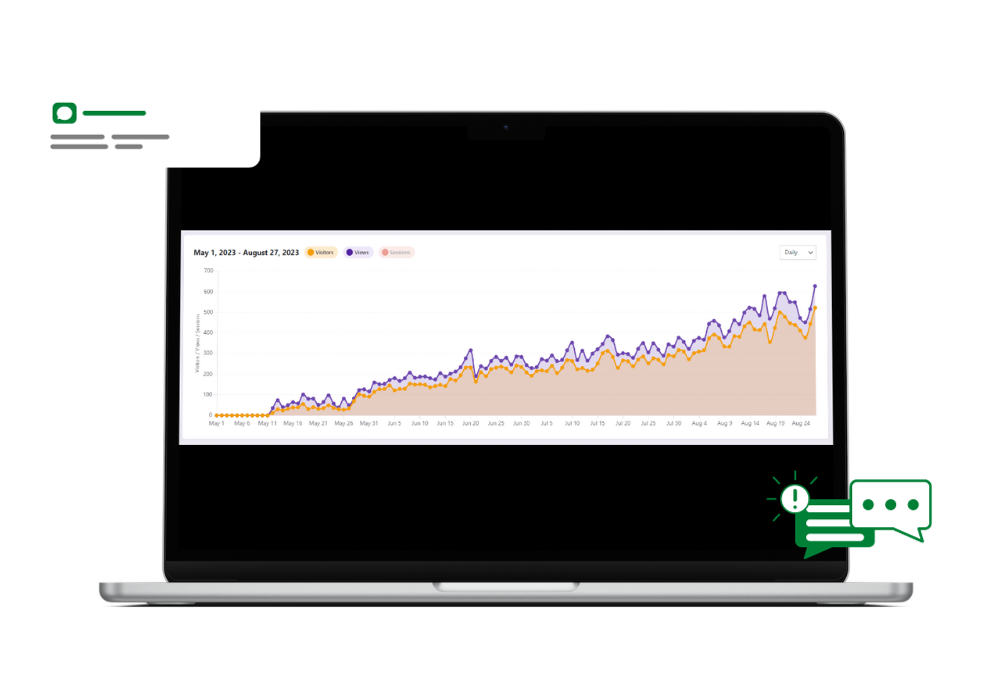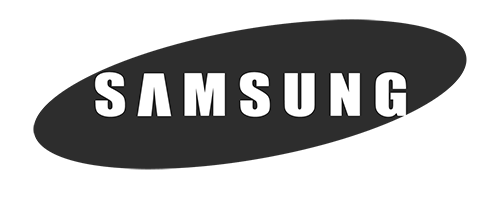Demand Generation Agency
Outstanding demand generation marketing for growth-hungry companies
Unleash the Full Potential of Your Business with Tailored Marketing Solutions Designed for Rapid Sustainable Growth

Trusted by the world's biggest brands








B2B Marketing Agency
Unlock Exponential Growth Potential With Our Dynamic Marketing Strategies
We harness data-driven insights and cutting-edge technology to strategically amplify your brand’s presence, engaging and converting a 10x larger audience into loyal customers.
“Michael understands the business of delivering quality services and holds to a high set of principles.
- Basil Bahoshy| Group CIO (UAE)
Demand Generation Company
Why should you choose ProRevGro?
With Prorevgro, you’re not just paying for marketing services.
You’re amplifying revenue growth at a discount.
- Analyze for growth opportunities
- Tailor strategies to your goals
- Optimize for maximum visibility
- Maximize return on investment
- Massive scale via AI & automation


Profitable revenue growth is our priority.
There are a myriad of benefits to digital marketing, but our unwavering objective is consistently delivering profitable revenue growth above all else.
FreshGear.com Case Study
- SEO
- Automation
- AI
90-day Organic Website Traffic Growth
+Increase
90-day Google Ranking
Keywords
Glossary Pages
FAQs
Articles
SEO
Organic Content
B2B Demand Generation Case Studies
Tap into sales and marketing principles that drove $300m in B2B revenue.
Gain exclusive access to the proven sales and marketing strategies that propelled B2B businesses to achieve a staggering $300 million in revenue.
- AI Content Creation
- Strategic Partnerships
- Consultative Selling
- Profit Prioritization
- Digital Transformation
Demand Generation Marketing Strategies
Leverage proven growth methodologies and innovative tools
Leverage our expertise in implementing proven growth methodologies and cutting-edge tools to drive your business to new heights of success.
USEFUL CONTENT AT SCALE
Google highly rewards useful content. We deliver valuable content at scale to engage your audience and drive meaningful results.
PROGRAMMATIC SEO
Utilize programmatically-driven SEO strategies to efficiently optimize your online presence and enhance your digital marketing performance.
- Actual client results - Organic Traffic Accelerated Growth - 2023
Demand Generation Marketing Services
Our Expertize & Services.
From crafting compelling narratives to executing data-driven strategies, we offer a comprehensive suite of marketing services tailored to meet your business goals.
Value Proposition Clarity
Establishing the golden promise that sets you apart and accentuates your brilliance.
01
Programmatic SEO Research
Unleash a torrent of organic traffic with data-driven SEO strategies that boost topical authority and foster Google E-E-A-T.
02
Establish Unique Differentiators
Unique differentiators carve your niche in the market, ensuring your offerings resonate with your target audience.
03
04
Competitive Analysis
Laying the groundwork for strategic advantage and market dominance.
05
Digital Marketing Plan
Your blueprint for online dominance, meticulously crafted to capture attention, ignite engagement, and drive conversions.
06
Crafting Strategic Narratives
Embeds your brand's essence in compelling tales, steering audience engagement and actions.
Frequently Asked Marketing Questions
SEO FAQs
What exactly is SEO?
- SEO, or Search Engine Optimization, is a set of practices aimed at improving the visibility of a website or web page in organic (non-paid) search engine results.
- The goal is to increase the quantity and quality of traffic to your website through higher search engine rankings.
How does SEO work?
- SEO works by optimizing various elements on and off your website to make it more attractive to search engines.
- The process involves technical setup to ensure that search engines can find, scan, and index your pages efficiently.
- It also requires content optimization by creating and optimizing content with relevant keywords to match the queries of users and make the pages more relevant and useful to visitors.
Is SEO really needed?
- SEO is crucial for businesses and website owners who want to increase their online visibility, attract more visitors, and compete effectively in the digital space.
- By optimizing your site for SEO, you improve the chances of your site ranking higher in search engine results, which in turn can lead to more traffic, leads, and potentially more customers.
Is SEO still relevant in 2023?
- SEO remains highly relevant.
- Prorevgro leverages updated SEO strategies, like programmatic SEO, embracing its ongoing significance in driving organic traffic and improving online visibility.
Is SEO free or paid?
- SEO primarily focuses on improving organic (non-paid) search rankings.
- However, it's not entirely free as it requires investments in terms of time, effort, and potentially hiring SEO experts or using SEO tools to optimize your website effectively.
What is Programmatic SEO?
A method of generating SEO campaigns at a larger scale using automated or programmatic means, automating SEO campaigns, creating content at scale, and leveraging AI to significantly enhance the efficiency and output of SEO efforts.
Growth Marketing FAQs
What is growth marketing
Growth marketing focuses on optimizing the entire marketing funnel to grow an audience or customer base. It's data-driven, involves continuous testing, and looks at the entire customer journey from awareness to retention and referral.
Growth marketing vs traditional marketing
Traditional marketing primarily focuses on branding, communications, and engagement to build brand awareness and attract customers. It employs strategies like advertising campaigns, public relations, and promotional events to disseminate the brand message and engage with a broad audience.
Growth marketing is more user-centric and leverages technology to analyze and optimize campaigns for short-term performance and long-term value creation.
What's included in growth marketing?
- Full-funnel analysis
- Data-driven decision-making and analytics
- Continuous experimentation and optimization
- User-centric approaches including user feedback and persona development
- Leveraging technology for automation, analysis, and scaling campaigns.
Most common growth marketing strategies?
- Market Penetration: Selling existing products in existing markets to increase market share.
- Market Development: Entering new markets with existing products.
- Product Development: Introducing new products to existing markets.
- Diversification: Launching new products in new markets.
Growth marketing Example?
- A common growth marketing strategy is programmatic SEO.
- The insights gained from analytics help in optimizing organic content, and determining which content to publish at scale.
B2B Marketing FAQs
What is B2B marketing?
B2B marketing is the strategic approach of one business marketing its products or services to other businesses, focusing on solving problems, enhancing operations, and driving growth for both parties involved.
How does B2B work?
- B2B (Business-to-Business) operates by providing products or services to other businesses rather than individual consumers.
- This involves longer sales cycles, larger transactions, and a focus on building long-term relationships with other businesses to meet their operational needs and solve specific industry challenges.
Difference between B2B Marketing vs B2C Marketing?
- B2B Marketing: Primarily targets organizations and businesses, focusing on solving problems and meeting the needs of multiple stakeholders within those organizations. It often involves higher value transactions, longer sales cycles, and a more complex decision-making process.
- B2C Marketing (Business-to-Consumer): Targets individual consumers, focusing on fulfilling personal needs or desires. It usually involves lower value transactions, shorter sales cycles, and a more straightforward decision-making process.
Types of B2B Marketing
- Content Marketing: Creating valuable content to attract and engage business audiences, establishing thought leadership and educating potential customers.
- Social Media Marketing: Utilizing platforms like LinkedIn to connect with business professionals and share industry insights.
- Email Marketing: Sending personalized emails to nurture leads and keep customers informed.
- Search Engine Marketing (SEM) and Search Engine Optimization (SEO): Promoting businesses online to increase visibility and attract business leads.
- Event Marketing: Hosting or participating in industry events to network and build relationships with potential customers.
What are some examples of B2B Marketing?
- LinkedIn Advertising: Utilizing LinkedIn's targeted advertising features to reach decision-makers in specific industries.
- Whitepapers and Case Studies: Creating and distributing whitepapers and case studies to demonstrate expertise and provide solutions to industry challenges.
- Webinars and Online Workshops: Hosting educational webinars and workshops to engage with potential customers and showcase industry knowledge.
Marketing Automation FAQs
What is marketing automation?
- Marketing automation harnesses software and technology to execute, manage, and automate marketing tasks and processes, allowing businesses to increase efficiency and personalize interactions at scale.
- By automating repetitive tasks, it empowers marketers to focus on strategy and creative work, while also providing insightful analytics to continuously optimize performance and drive better marketing outcomes.
What is the Importance of Marketing Automation
- Efficiency: Automates repetitive tasks, saving time and allowing marketers to focus on more strategic activities.
- Personalization: Enables personalized marketing at scale by utilizing customer data to tailor interactions.
- Lead Management: Helps in nurturing leads through the sales funnel, improving the quality and readiness of leads for sales engagement.
- Measurement and Analytics: Provides insightful analytics to measure the effectiveness of marketing campaigns and optimize performance.
- Customer Engagement: Enhances customer engagement by delivering consistent and personalized communication across various channels.
- Scalability: Allows businesses to manage and optimize marketing efforts effectively as they grow.
- Improved ROI: By optimizing marketing efforts, businesses can achieve better return on investment in their marketing campaigns.
What are some examples of marketing automation?
- Marketing automation streamlines routine tasks such as email campaigns, lead scoring, social media posting, and ad management, saving time and ensuring consistent engagement with audiences.
- By integrating with CRM systems, it centralizes customer data, enabling personalized interactions across various channels, which in turn, helps in nurturing leads, optimizing marketing efforts, and improving ROI.
What Are Some Benefits of Marketing Automation?
- Marketing automation not only streamlines repetitive tasks, freeing up valuable time, but also personalizes customer interactions at scale, fostering a deeper engagement and understanding between the brand and its audience.
- By providing insightful analytics and a centralized platform for lead management, it empowers businesses to continually optimize their marketing strategies, resulting in improved ROI, better alignment between marketing and sales, and enhanced customer experiences.
FREE CONSULTATION
Unlock a world of actionable insights, expert advice, and cutting-edge strategies to propel your marketing efforts and accelerate your business growth.
